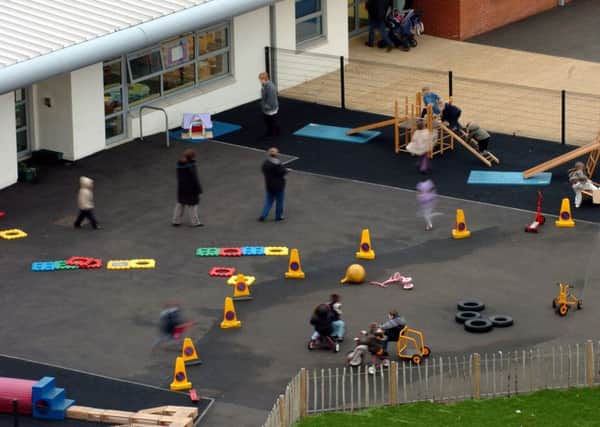Anne Ellaway: Actively use Scots outdoor space


When Aberdeen City Council became the first local authority to remove “No Ball Games” signs from the city’s public parks last month, it sent a strong message that outdoor spaces should be used to the full by our children.
The recruitment to its campaign by Aberdeen of Scottish football legend Denis Law will, we hope, underline that outdoor play should be encouraged – not discouraged. It seems counterintuitive that such signs should ever appear in open green spaces. The most recent Scottish Health Survey shows us that around three in ten (31 per cent) of children (aged between two and 15 years old) are at risk of being overweight or obese, with rates highest among the 12-15 age group (37 per cent).
Advertisement
Hide AdAdvertisement
Hide AdFurthermore, overweight and obesity levels are more prevalent among those living in more deprived areas – the very families most dependent on public open spaces for play areas.
Insufficient amount of physical activity is one of the main causes of overweight and obesity. For that reason, it is a key Scottish Government policy priority to increase physical activity among children and young people. Recent research by my colleague, Dr Paul McCrorie, reinforces the message behind the council’s removal of “No Ball Games” signs.
He found that the area around the home is an important site for children’s physical activity, but that many children do not have access to a garden. This suggests that we need to know more about how children use the space around their neighbourhood for being active. To shed light on this, we are currently conducting a new study, SPACES (Studying Physical Activity in Children’s Environments across Scotland), of more than 1,000 ten-year-old children.
The children have been taking part in the long-term Growing Up in Scotland (GUS) study since they were toddlers. In the SPACES study, the children are being asked to wear two small devices on a belt for one week; one, called an ActiGraph, measures how physically active they are while the other GPS device (Global Positioning Systems) collects information on the location of that activity.
A common misconception is that GPS provides current, live information about the whereabouts of its user that can be accessed at the time they are using it Worry not – the data from the GPS devices can only be downloaded by the research team using special software and this is done at least a week after the activity has taken place.
Collecting this data from this group of children at this particular age is important, given how physical activity declines as children move from primary into secondary school and, especially among girls, through their teenage years.
The wider GUS study gives us an excellent opportunity to see what factors could be at play. For example, parents in deprived urban areas are more likely to perceive their local neighbourhood as less child-friendly.
The data that we are collecting in our study will assist in understanding not only levels of physical activity but also how young people are really using their local environment every day.
Advertisement
Hide AdAdvertisement
Hide AdWe hope the picture the data we gather in this study provides us with will give valuable information for local and national policy makers and planners so that children can live as active, healthy lives as possible.
• Professor Anne Ellaway is programme leader of the Neighbourhoods and Communities Programme at the MRC/CSO Social and Public Health Sciences Unit, University of Glasgow